Iconography and Icons
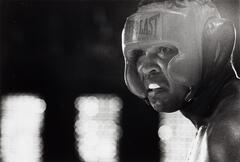
Artist Unknown
Muhammad Ali
black and white photograph on paper
8 x 9 13/16 in. ( 20.32 x 24.92 cm )
Gift from the Collection of David S. Rosen MD, MPH
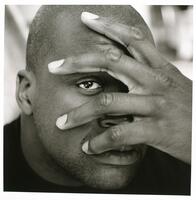
Rick Chapman
Shaquille O'Neal, West Hollywood, California, from "The ESPY Collection"
gelatin silver print on paper
14 in x 10 15/16 in (35.5 cm x 27.8 cm);22 1/8 in x 18 1/8 in (56.2 cm x 46.04 cm);10 3/16 in x 10 3/16 in (25.8 cm x 25.8 cm)
Gift of the artist

Rick Chapman
Sammy Sosa, Smile, Chicago, Illinois, from "The ESPY Collection"
gelatin silver print on paper
14 in x 10 15/16 in (35.5 cm x 27.8 cm)
Gift of the artist
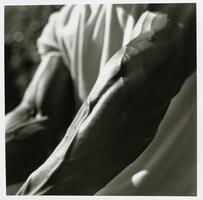
Rick Chapman
Sammy Sosa, Chicago, Illinois, from "The ESPY Collection"
gelatin silver print on paper
14 in x 10 15/16 in (35.5 cm x 27.8 cm)
Gift of the artist

Rick Chapman
Brett Favre, Green Bay, Wisconsin, from "The ESPY Collection"
gelatin silver print on paper
14 in x 10 15/16 in (35.5 cm x 27.8 cm);22 1/8 in x 18 1/8 in (56.2 cm x 46.04 cm);10 3/16 in x 10 3/16 in (25.8 cm x 25.8 cm)
Gift of the artist
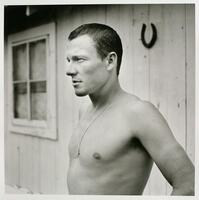
Rick Chapman
Lance Armstrong, Austin, Texas, from "The ESPY Collection"
gelatin silver print on paper
14 in x 10 15/16 in (35.5 cm x 27.8 cm);22 1/8 in x 18 1/8 in (56.2 cm x 46.04 cm);10 3/16 in x 10 3/16 in (25.8 cm x 25.8 cm)
Gift of the artist
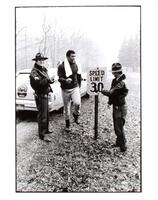
Howard Bingham
Cleveland, from "Detroit Focus 2000"
black and white photograph on paper
14 in. x 11 in. ( 35.5 cm x 27.9 cm )
Gift of Detroit Focus 2000, and partial purchase with funds from the Jean Paul Slusser Memorial Fund
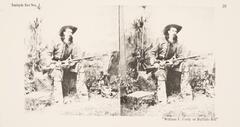
Stereo Classics Studio
Stereoscope Image, Sample Set No.1: "William F. Cody or Buffalo Bill"
photograph on cardboard
3 3/4 in. x 7 in. ( 9.5 cm x 17.8 cm )
Gift of Margaret and Howard Bond

James Anderson
Hercules
albumen print on paper
7 3/4 in x 10 1/4 in (19.6 cm x 26 cm);14 5/16 in x 19 5/16 in (36.35 cm x 49.05 cm);10 3/16 in x 7 13/16 in (25.9 cm x 19.9 cm);9 13/16 in x 7 13/16 in (24.9 cm x 19.9 cm)
Transfer from the Kelsey Museum of Archaeology
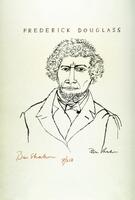
Ben Shahn
Portrait of Frederick Douglass
screenprint on paper
22 1/16 x 16 15/16 in. (56 x 42.9 cm)
Gift of Warren M. Robbins

Sir Eduardo Paolozzi
Llalla Pallozza...Image fades but memory lingers on
screenprint on paper
14 15/16 in x 10 in (37.94 cm x 25.4 cm);19 3/8 in x 14 in (49.21 cm x 35.56 cm)
Gift of Professor Diane M. Kirkpatrick

Andy Warhol
Wayne Gretzky
Polaroid
4 1/4 in x 3 3/8 in (10.8 cm x 8.6 cm)
Gift of The Andy Warhol Foundation for the Visual Arts, Inc.
When director George Butler's "Pumping Iron" was released in 1977, an entire generation of American men were exposed to Arnold Schwarzenegger and bodybuilding for the first time. While fitness had already been a growing national interest, "Pumping Iron" generated a bodybuilding craze among men, with Arnold becoming a figure of masculinity. Arnold's icon status led to significant material changes in the American landscape, not only generating a thriving fitness culture, but also shaping the bodies of generations of American men.
This collection of objects highlights male icons like Schwarzenegger, Ali, Armstrong, and Douglass. How does our perception of these images change based on our contingent ability to recognize their subjects as iconic figures? Decontextualized, do these images have meaning?












